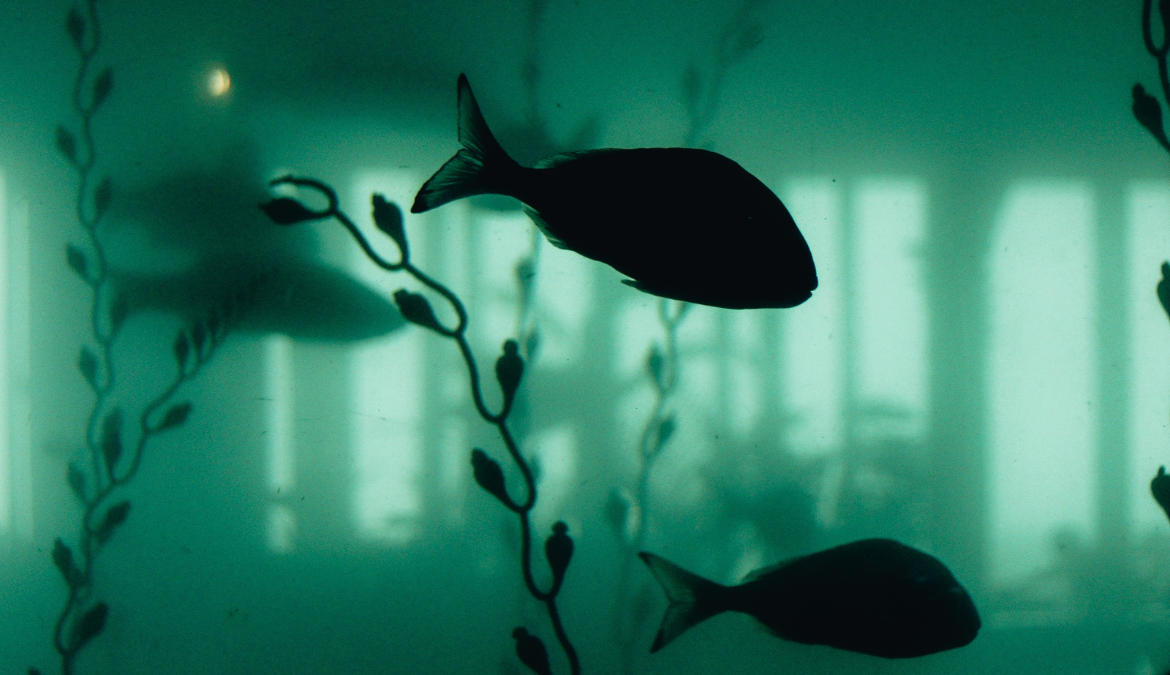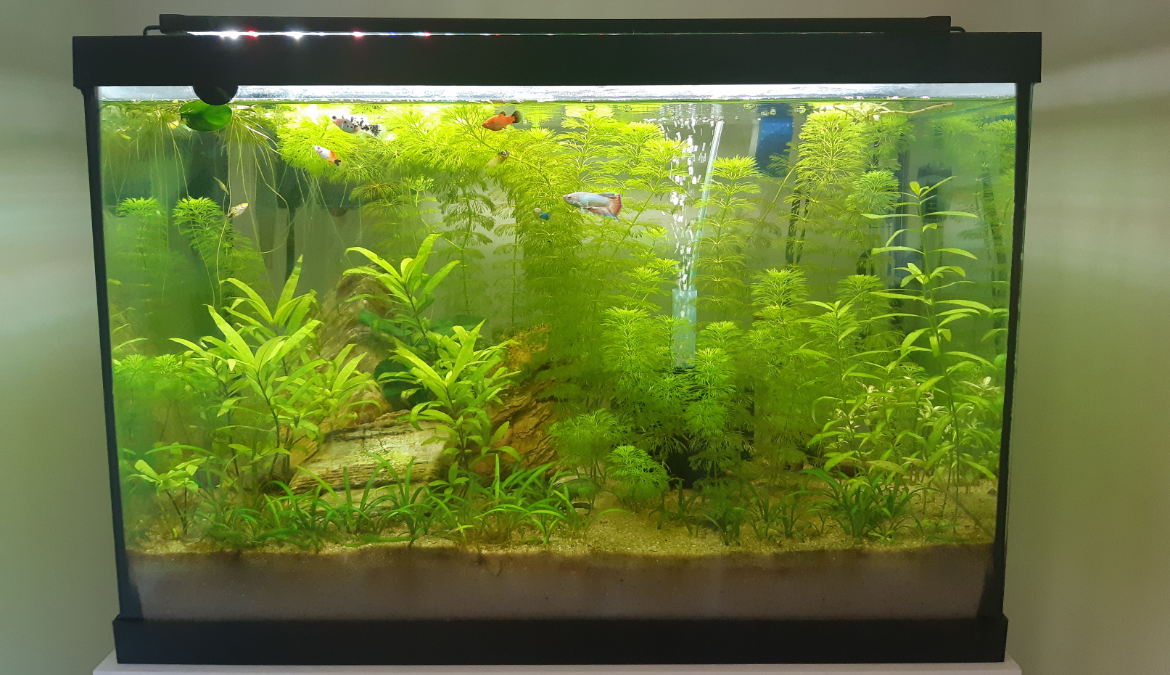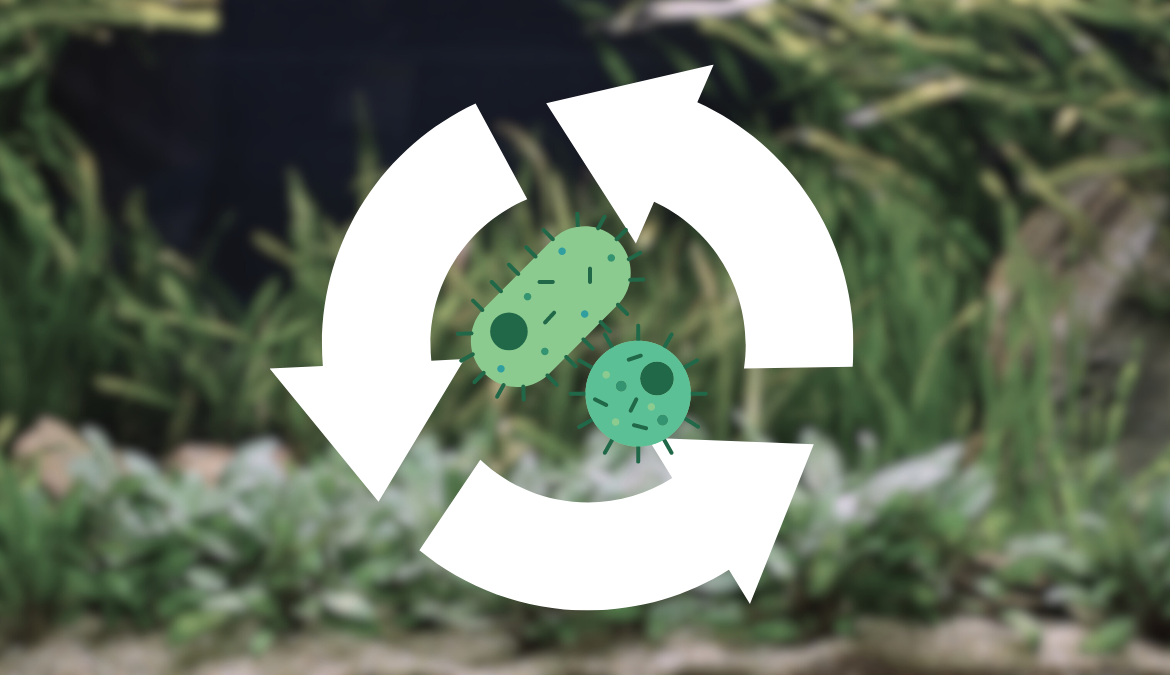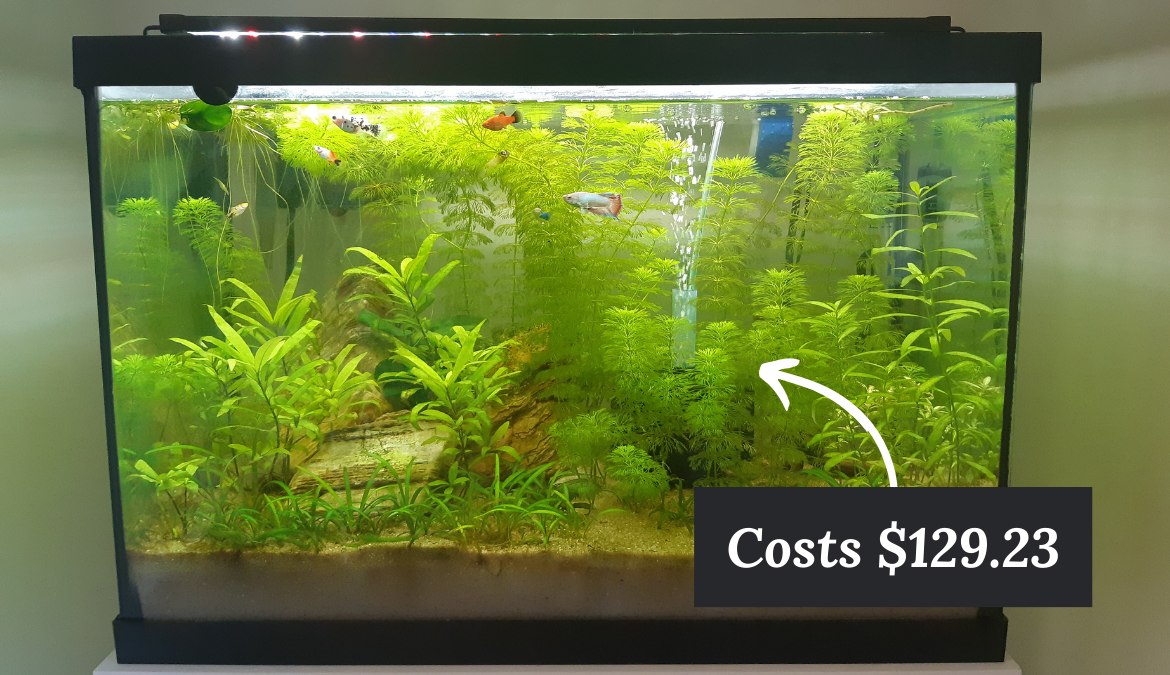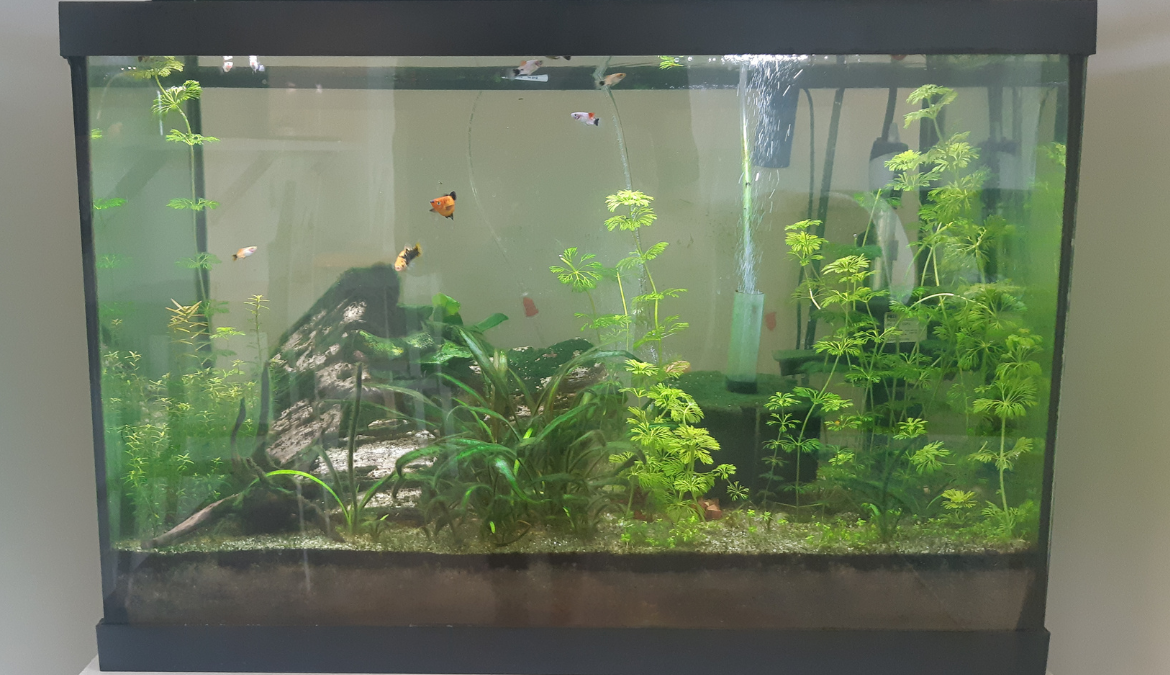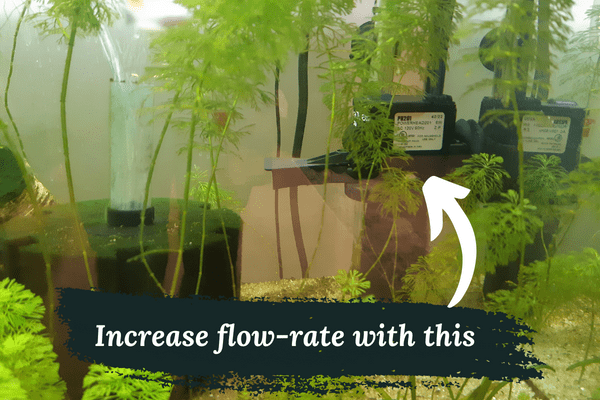Fertilization is a vitally important aspect of low-tech planted aquariums. However, it can be difficult to know what fertilizers are best for your particular tank and plants. The following guide will help you create an effective fertilization regiment that promotes the health and growth of your aquatic garden.
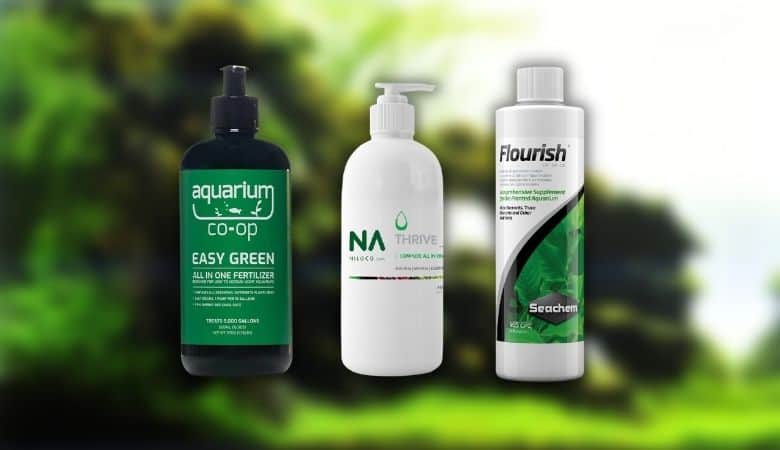
Contents
- 1 Low-tech fertilizer regime
- 2 Why do aquatic plants require fertilization?
- 3 Do low-tech plants require fertilization?
- 4 Are all fertilizers the same?
- 5 Types of aquatic plant fertilizers
- 6 Which fertilizers should I use for my low-tech tank?
- 7 Recommended fertilization products
- 8 Macronutrients vs. micronutrients
Low-tech fertilizer regime
Low-tech planted tanks require a relatively simple fertilization routine. Once a tank has been established after a few weeks, the routine involves dosing all-in-one liquid fertilizer once or twice per week, and root tabs once per month.
Both the root tabs and liquid fertilizers are sold by a variety of companies. Although each company’s fertilizer contains slightly different composition from the rest, they will all allow aquarists to successfully grow plants in a low-tech environment.
Fertilization before a tank has been established
Once a low-tech planted aquarium has been established, it usually only takes a small amount of work once-per-week to maintain.
However, I recommend conducting more frequent water changes and fertilization dosing during the first three weeks so the plants can start growing roots, acclimate to the water conditions, and start consuming nutrients in larger quantities.
During this initial 3-week period while the plants are not fully established, opportunistic algae will start to take over the tank by consuming excess light and nutrients. As a result, a more rigorous maintenance routine at the beginning will help to prevent algae growth.
Below is my suggested fertilization process for the first three weeks:
First three weeks
First, let’s assume our new tank has a “baseline” set up. This includes:
- 1.5-2 inches of substrate added to tank;
- Conditioned water has been added and measured for pH;
- A heater with the correct wattage for our tank volume has been set to an appropriate temperature (72-80 degrees Fahrenheit);
- A filter has been installed with an appropriate flow rate for planted tanks;
- Root tabs have been added 4-6 inches apart throughout the tank;
- Plants have been planted in the substrate; and
- Your first dose of liquid fertilizer has been added, creating a nitrate concentration of 20ppm.
Once the list above is complete we can begin the 3-week fertilization regime to initiate some healthy plant growth, while minimizing algae. Here is my suggest 3-week procedure:
Weekly low-tech fertilization regime
Once your planted tank is established, you can dial back the maintenance to once-per-week.
Every week, do a 20% water change and re-dose nitrates to 20ppm using an all-in-one liquid fertilizer. Consider increasing your fertilization frequency to twice-per-week if you notice symptoms of nutrient deficiency in your plants.
I spend about 20-minutes each Saturday performing this weekly maintenance.
Monthly low-tech fertilization regime
There are a few maintenance tasks that are important to perform, but on a less frequent basis.
Every month, do a 30-50% water change, trim and propagate your plants, clean your filter, add new root tabs, and re-dose your nitrate levels to 20ppm using an all-in-one liquid fertilizer.
You can simply replace your fourth weekly water change with this more robust maintenance session. This maintenance session may take me around 45-minutes to complete.
This once-per-month tune up will allow you to remove excess debris and filter gunk to maintain clean water. The trimming will help your plants grow more lush and full, and the propagation will allow you to plant your tank more densely.
Root tabs
Most fishkeepers and manufacturers recommend burying new root tabs every 4-6 weeks. In my experience, every 3-4 weeks seems to be the sweet spot to maintain healthy plant growth in my tanks.
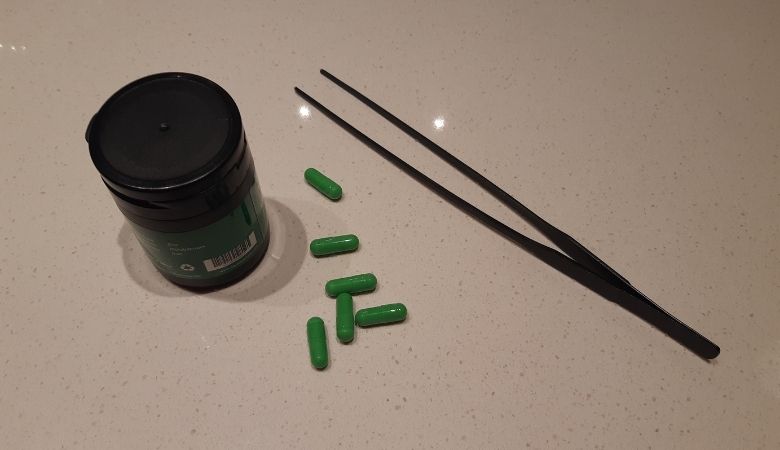
The frequency in which you must plant root tabs depends of the types of plants you have and how densely your aquarium is planted.
A densely planted tank will deplete root tab nutrients more quickly, which will require your to plant them more frequently.
And certain plant species absorb a greater percentage of their nutrients from their roots compared to the water column. So if you have more “root feeder” plants then you will likely require more frequent root tab fertilization.
I suggest starting with a 4-week root tab schedule and adjust as you notice nutrient deficiencies. For example, if you notice pale or yellowing leaves, leaf holes, brown spots or other symptoms that suggest your plants aren’t thriving, then consider increasing your frequency by one week.
All-in-one liquid fertilizers
Liquid fertilizers are a quick and easy method for dosing important macro and micronutrients directly into the water column. All plants absorb nutrients from their roots and from the water itself.
Certain plants demand more liquid fertilization while others require more root fertilization. Regardless, I recommend dosing both root tab and liquid fertilization to promote maximum plant growth for all your plants.
For most low-tech tanks, 1-2 doses of all-on-one liquid fertilize will be sufficient per week. The amount per dose depends on the size of your tank and the fertilizer brand you choose.
For example, the Aquarium Co-op Easy Green liquid fertilizer recommends adding one pump per 10 gallons. A larger tank size will require a larger dosage amount.
Regardless of which fertilizer you choose to use, I recommend testing your nitrate levels after dosing and trying to aim for approximately 20ppm. This is the sweet spot concentration for promoting healthy plant growth, while preventing overdosing.
Why do aquatic plants require fertilization?
Fertilization is required for plants to develop chlorophyll, absorb light, produce glucose, utilize CO2 and more. A lack of fertilization will cause deficiencies in macro and micronutrients that will cause chlorosis and necrosis. In other words, they will lose color and die.
Some of these nutrients are present in tap water and active substrates, but not in high enough quantities to sustain healthy plant growth. Fertilization is require to some extent in all planted tanks.
Do low-tech plants require fertilization?
Low-tech planted tanks require 1-2 doses of liquid fertilization per week to sustain healthy growth. Whereas high-tech tanks may require daily dosing. The amount of required fertilizer depends on the type of plants in a tank, the intensity of the lighting and the concentration of CO2.
Low-tech tanks are characterized by the lack of CO2 injection. As a result, this means less light and fertilization is require than high-tech tanks.
Are all fertilizers the same?
Root tabs and all-in-one liquid fertilizers contain similar concentrations of macro and micronutrients. Each differs slightly but are fairly interchangeable. Powdered fertilizers typically contain individual macro and micronutrients which are manually combined for precise dosage.
it is generally accepted that low-tech tanks can thrive with either root tabs, all-in-one fertilizers or a combination of both. These fertilization methods can be dosed by simply adding a specified number of tabs or number of pumps.
Whereas powdered fertilizers require a ore robust daily dosing schedule with precise fertilizer measurement.
Types of aquatic plant fertilizers
Root tabs, all-in-one liquid fertilizers and powdered fertilizers are the three main methods for adding macro and micronutrients to your planted tank.
| Pros | Cons | |
| Root tabs | ✔️ Only have to add once per month. ✔️ Contains both macro and micronutrients. | ❌ Less effective for “water feeding” plants. |
| All-in-one fertilizers | ✔️ Contains both macro and micronutrients. ✔️ Can be easily dosed with pump. | ❌ A little more expensive over the long-term. |
| Powdered fertilizers | ✔️ Can precisely dose specific nutrients. ✔️ Less expensive over the long-term. | ❌ Have to accurately measure and combine multiple fertilizers together. |
Which fertilizers should I use for my low-tech tank?
To keep things simple, I recommend using root tabs and all-in-one liquid fertilizers for low-tech tanks.
Start by adding root tabs once-per-month. Bury them beneath the substrate every 4-6 inches throughout your tank.
Then dose an all-in-one liquid fertilizer of your choice once-per-week. Refer to the dosing instructions on your product to determine how much you should add to your specific tank volume.
After adding the liquid fertilizer, I recommend testing your nitrates and confirming they’re around 20ppm. If they’re a little higher or lower, consider adjusting your liquid fertilizer dosing amount next time.
Recommended fertilization products
Root tabs
Aquarium Co-Op Easy Root Tabs are reasonably priced and contain either 20 or 60 dissolvable gel-cap tabs. These are the root tabs I am currently using and would recommend. Although I’ve had very similar success with the other brands below.
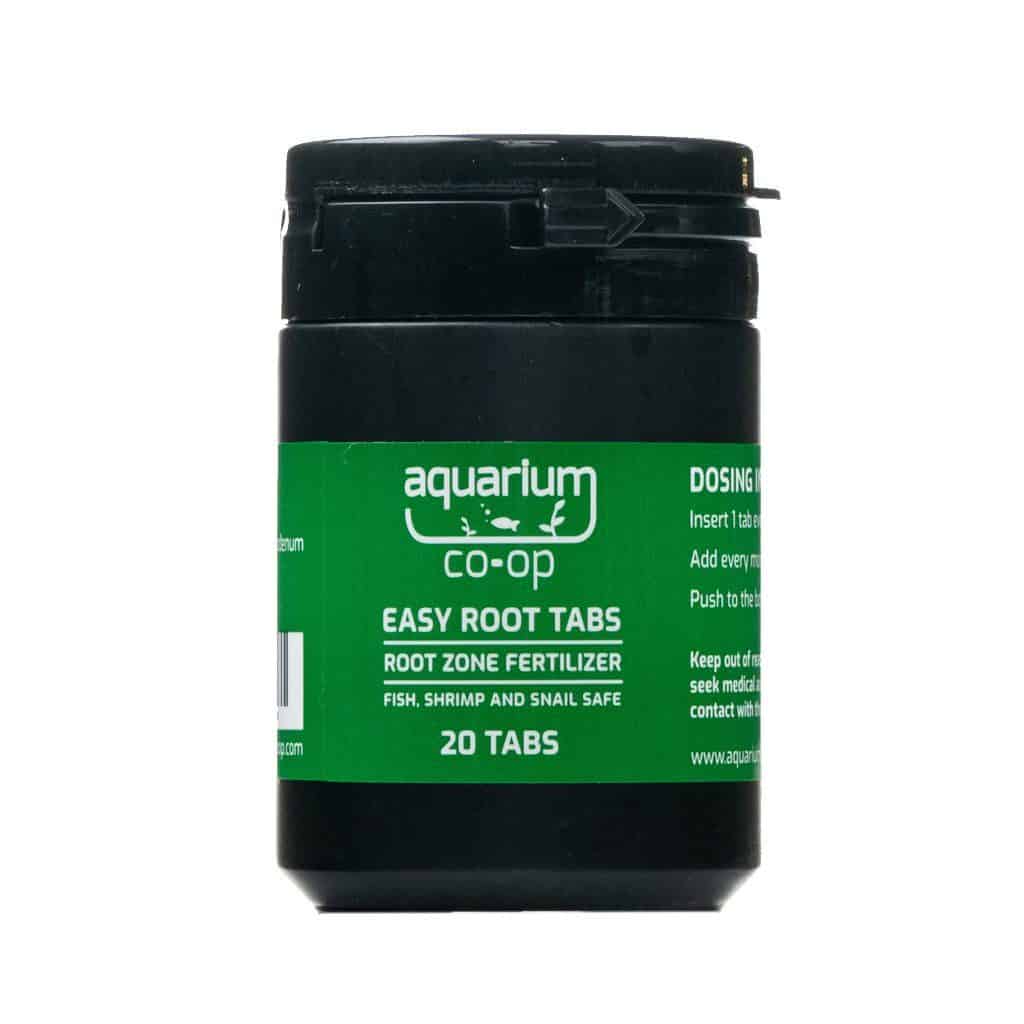
API Root Tabs are easy to find at most fish retail stores. The drawback in my experience is that they start dissolving before you are able to bury them in your substrate. This isn’t harmful but makes them difficult to use because it tends to attract your fish to your planting locations.
Also, they are only sold in packs of 10, which is not the most economical. And they don’t clearly publicize the guaranteed analysis of what’s inside. Otherwise, my experience using them was fine.
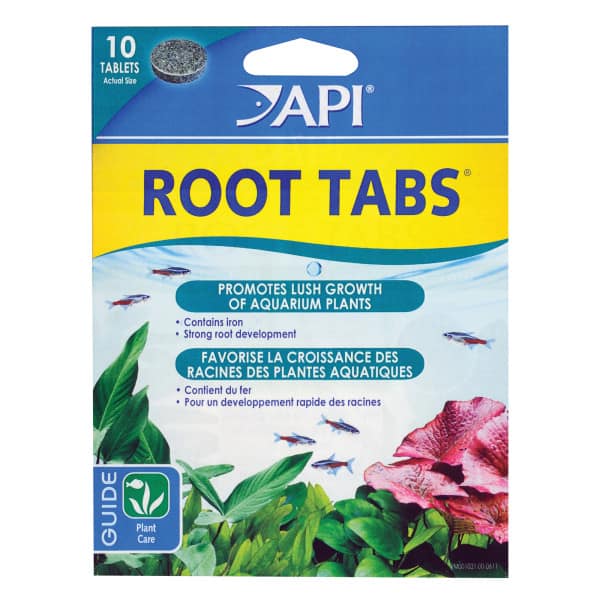
Seachem Flourish Tabs are another great option with a good composition of macro and micronutrients. Like the API Root Tabs, they are not contained inside capsules, which means they tend to start dissolving as soon as you submerge them into water.
They come in packs of 10 or 40.
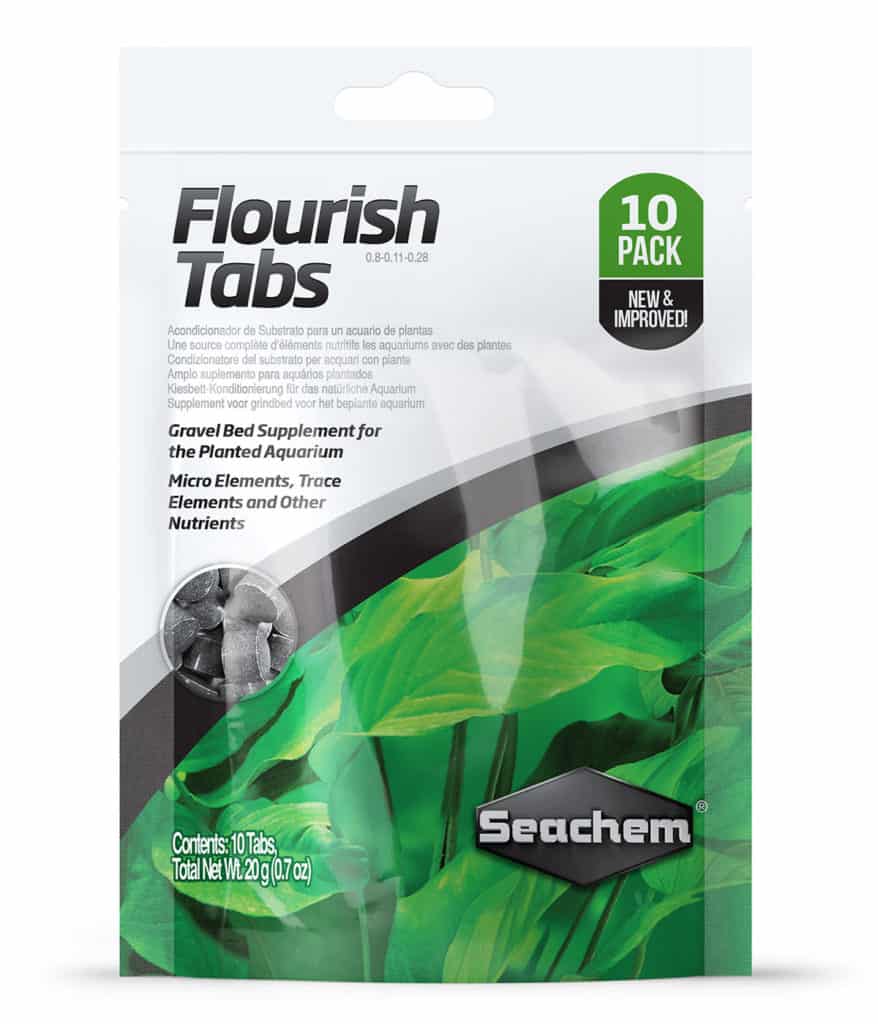
| Aquarium Co-Op root tabs | API root tabs | Seachem root tabs | |
| Nitrogen | Yes | Yes | Yes |
| Magnesium | Yes | Unknown | Yes |
| Potassium | Yes | Yes | Yes |
| Phosphate | Yes | Yes | Yes |
| Boron | No | Unknown | Yes |
| Chlorine | No | Unknown | No |
| Copper | No | Yes | Yes |
| Iron | Yes | Yes | Yes |
| Manganese | Yes | Unknown | Yes |
| Molybdenum | Yes | Yes | Yes |
| Nickel | No | Yes | No |
| Zinc | Yes | Yes | Yes |
| Mineralized top soil | Yes | Unknown | No |
| Clay | Yes | Unknown | No |
All-in-one liquid fertilizers
Aquarium Co-op Easy Green is an excellent all-in-one liquid fertilizer that contains good amounts of most important macro and micronutrients. One micronutrient it does not include is copper, which makes it safe for shrimp and snails.
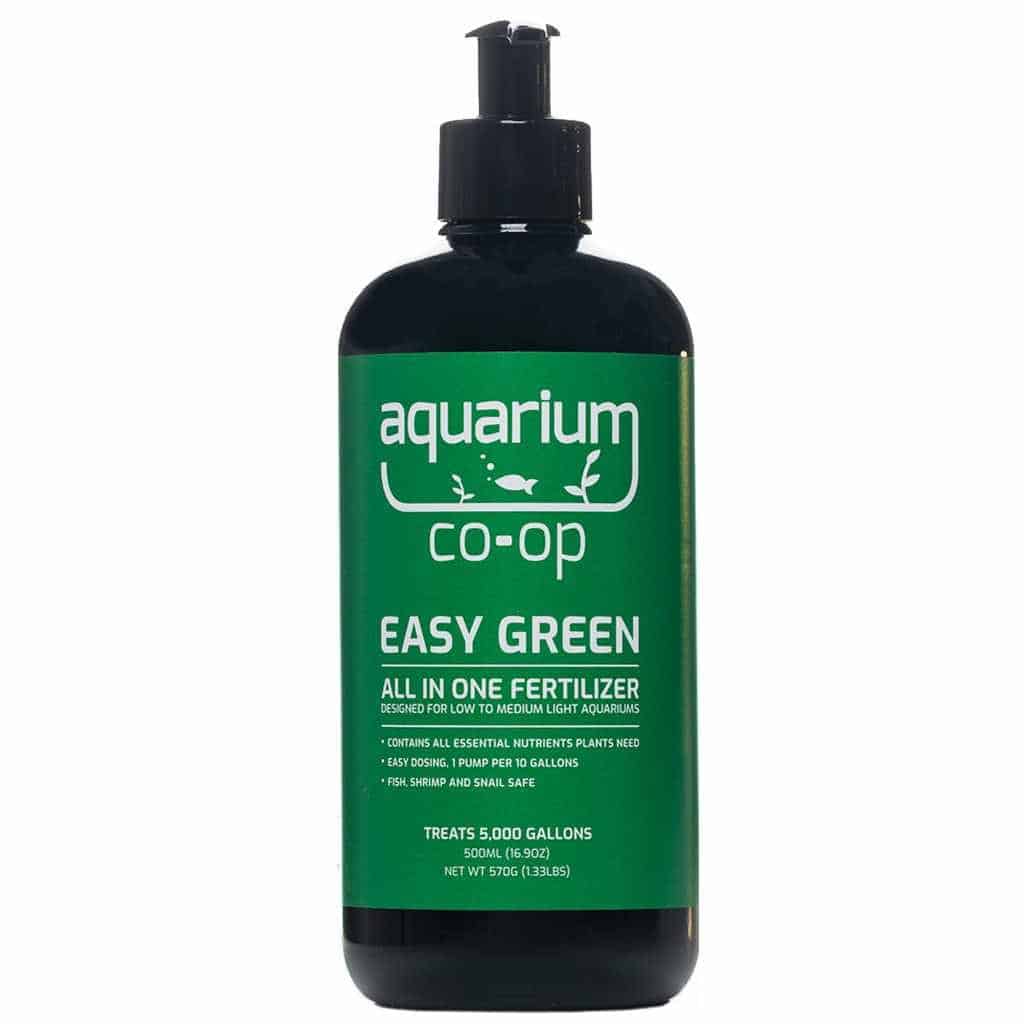
Thrive Complete All-in-One Liquid Fertilizer is an excellent alternative that contains comparable amounts of macro and micronutrients to Aquarium Co-Op Easy Green. Thrive contains more iron, manganese and phosphate, while Easy Green contains more magnesium, boron and zinc.
Thrive does contain copper, however.
For the average low-tech aquarium, I don’t believe either product is substantially better unless you have shrimp or snails, in which case stick with Easy Green.
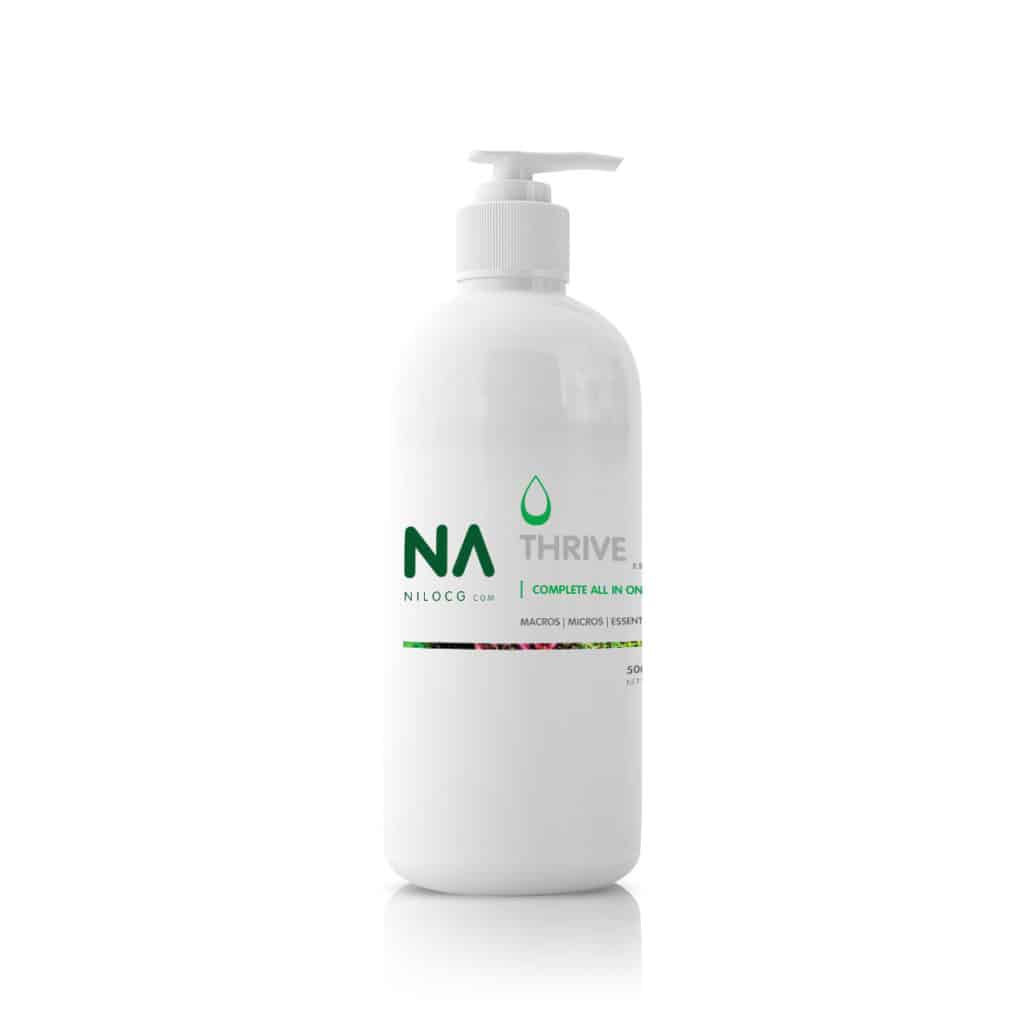
Seachem Flourish is technically an all-in-one fertilizer because it contains both macro and micronutrients. But I would consider it more of a micronutrient supplement because it contains very low concentrations of macronutrients such as nitrogen, magnesium, potassium and phosphate.
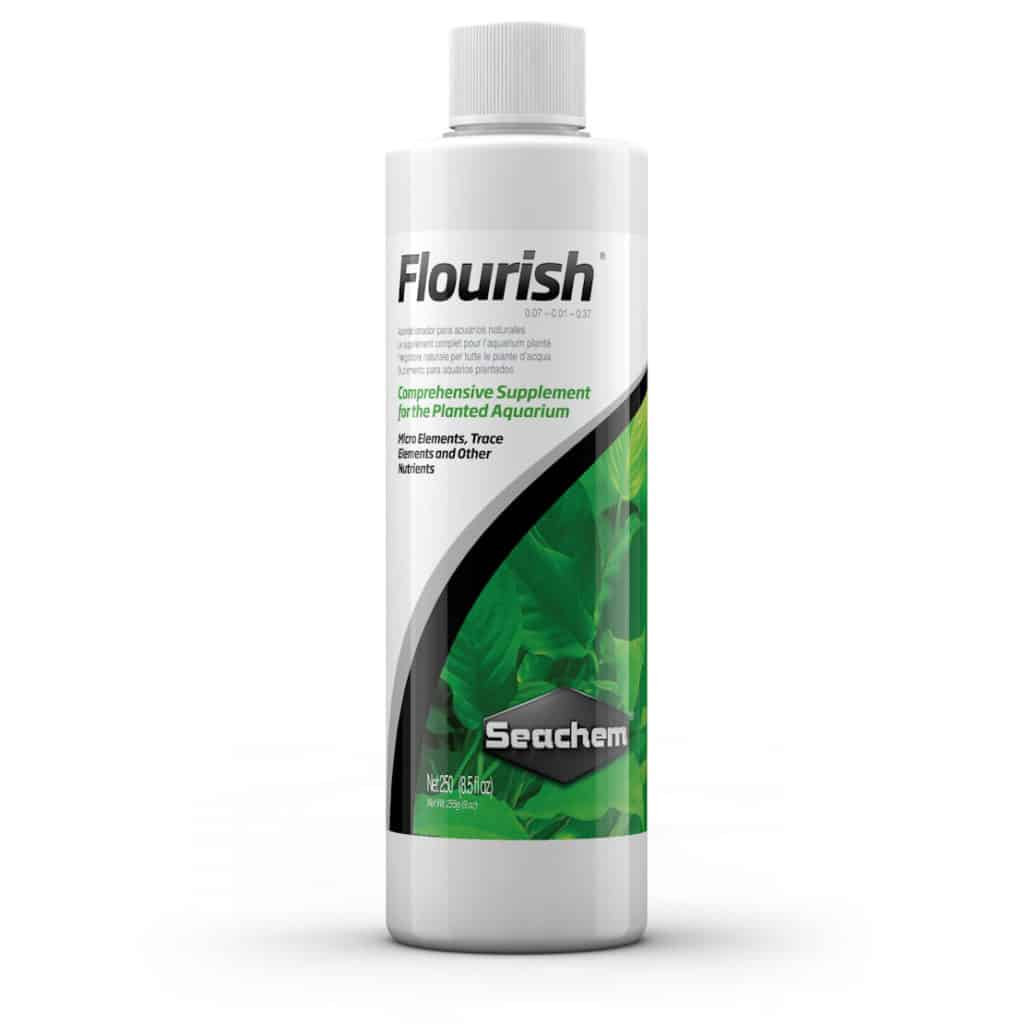
This is still a great product, but must be combined with additional liquid supplements such as Flourish Nitrogen, Flourish Phosphorus, and Flourish Potassium.
| Aquarium Co-Op Easy Green | Thrive Liquid Fertilizer | Seachem Flourish | |
| Nitrogen | 2.66% | 2.56% | 0.07% |
| Magnesium | 0.70% | 0.32% | 0.11% |
| Potassium | 9.21% | 9.74% | 0.37% |
| Phosphate | 0.46% | 1.58% | 0.01% |
| Boron | 0.015% | 0.008% | 0.009% |
| Chlorine | 0.00% | 0.00% | 1.15% |
| Copper | 0.00% | 0.0002% | 0.0001% |
| Iron | 0.13% | 0.42% | 0.32% |
| Manganese | 0.036% | 0.168% | 0.0118% |
| Molybdenum | 0.00098% | 0.0006% | 0.0009% |
| Nickel | 0.00% | 0.00% | 0.00% |
| Zinc | 0.0072% | 0.0038% | 0.0007% |
Macronutrients vs. micronutrients
Macronutrients are the 6 necessary nutrients that aquatic plants consume in the highest quantities. These are carbon, calcium, nitrogen, potassium, magnesium and phosphorus.
Micronutrients are trace elements consumed in small quantities that are important for growing lush and colorful plants. These include iron, manganese, chlorine, copper, boron, molybdenum, cobalt, and nickel.
Macronutrients
Carbon enters and aquarium primarily by fish respiration and from the atmosphere. But it can also be added artificially with pressurized CO2 tanks. It’s converted into glucose and used as energy for plants to grow.
Calcium is used to develop cell walls and membranes. It’s present in most people’s tap water, which is why it’s usually not included in most fertilizers.
Nitrogen is part of all amino acids, which are a basic component of proteins. It is one of the most important macronutrients and if often the cause of poor plant growth and algae problems when it’s not present in high enough quantities.
Potassium helps with osmoregulation through a plant’s stomata – the membranes that take in carbon dioxide and release oxygen. It provides a critical “breathing” function for plants. It’s not commonly found in water, which is why it’s often supplemented with fertilizers.
Magnesium is used as the foundation of the chlorophyll molecule, which is a pigment that absorbs energy from light.
Phosphorus creates a molecule called ATP, which is what transforms CO2 into glucose. It often enters a tank via uneaten fish food.
Micronutrients
Iron controls the respiration of oxygen and the production of chlorophyll and is typically the micronutrient consumed in the highest quantity. It helps increase coloration in plants, especially vibrant reds.
Manganese supports transport of electrons during the process of photosynthesis. It also aids in the production on chlorophyll.
Chlorine is required in very small amounts and supports with osmoregulation, similar to potassium.
Copper helps with respiration between the cells. It can be poisonous to the tank in high quantities.
Molybdenum is an important micronutrient that helps reduce nitrogen into ammonium, which is used for man functions such as hormones and chlorophyll development.
Other micronutrients include cobalt, boron and nickel.


